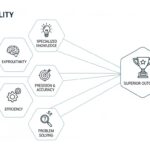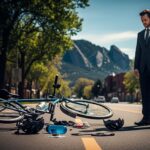I met American artist, Joshua Hagler, at the opening of his solo show The Adopted at Jaus earlier this year. With extensive research, he’s using various mediums to explore the role of religion. The variety of figures, shapes and endless texture against large scale canvases, begs us to ask the same questions he poses about religion, its history and our relationship to it. His current works approach the historical along with the futuristic.
What sparked your interest in religion?
I guess I take an interest in American history and religion because I’m searching for something that feels true about where I live, that gets underneath the things we take for granted. The terrain in America is haunted by its history and religious fervor and that stuff is bound up in its infrastructure, in its pathology maybe. But more to the point, I’m a product of these things and I want to make work about things that feel true about my experience of being here. Somehow I think it relates to a nebulous sense of shame that I feel I’ve somehow inherited or soaked up along the way. I want to be honest about what it feels like to be alive in this world, which is always beautifully misunderstanding or misrepresenting itself, and what I think my place is in that pregnant confusion. So it’s not really a matter of being “interested” in a removed or academic way, but in feeling implicated in a deeply cellular, molecular, bone marrow sort of way.
What are your most favored mediums and tools?
What that means is that I am redacting large sections from a 1970’s publication of Wilson Price Hunt’s Overland Diary in which he narrates their expedition from Missouri to the mouth of the Columbia River in present-day Astoria, Washington. I’m hoping to exhume something poetic that is also revealing about concepts of exploration and progress.Yesterday, at the studio, I started a 63 x 75 inch canvas. It will be called “Nine Explorers in the Same Place at the Same Time,” so I’ll literally be painting one over another from 1805 to a speculative sci-fi future. Amelia Earhart will be buried there in the middle because that just makes sense and because when I traced the Missouri River, I stopped in the town of Atchison, Kansas to visit her house which overlooks the river. So we have a connection now.
Then the neighbor came over for a short studio visit. That kept me from the last thing I wanted to do, which was to smash a bunch of action figures into little stone-sized bits. It’s hard to feel like I have time for everything. I have an assistant Tre, who comes in on Mondays, which is great, but I might try to see if one of my students would want to come in once a week as well.
Really so many places, I could take this question…maybe what’s most important is that I’ve learned the impossibility of finding consensus for any easy answer for what religion exactly is, and yet, despite the impossibility, it is ubiquitous. My feeling is that, it’s made up of the many facets of human behavior, so in that way, it’s probably as much a matter of existing from within each of us as it is a club that we join. My belief that art is a necessary part of survival is a religious belief, and my practice is the belief ritualized, not so different from cave paintings maybe. Even for self-described materialists and atheists, there is a faith wager placed on the momentary science usually not as well understood as thought and invariably proven by history to be wrong or incomplete later.This isn’t to say that science and religion are the same (I certainly don’t think that), but it is to say that they exist more in tandem than as diametric opposites. I think any visualization of possible realities is at least as much a human creation as a genuine discovery, or it might be that there is no difference, which is a conclusion that some want to draw from new theoretical physics. Or maybe today’s physics is tomorrow’s religion. Nothing is more embarrassing than certainty.
What resources are you relying on for your work?
Right now I’m focused on the layering of 19th-century exploration of North America, science fiction, family history, historical documents such as the Overland Diary of Wilson Price Hunt, which was a collaborative project of John Jacob Astor and former president Thomas Jefferson to establish a sister republic to the United States on the West Coast. It’s mostly unknown because it failed tragically.
In December and April, I followed parts of the Hunt expedition along the Snake River through Idaho and the Missouri River through Missouri, Kansas, and Nebraska. While in Missouri, I met a cousin for the first time, unknown to our family growing up because my uncle never knew he had a son before his untimely death at 49. I heard from Scott the first time at the end of 2012, on the night my ex-wife moved out.
To be technical, with regard to my more recent solo shows, which is where I think the question came from, I wasn’t really looking back so much as I was looking at how we construct history through cinema to benefit our present sense of ourselves, and in this case, how descendants of colonists reconcile our present with our past. Ironically, I’m looking at history even more now to make work based on science fiction and images of the future than I was before.When we’re talking about time, we’re taking a lot of things for granted and making a lot of assumptions about our relationship to it. For one thing, you can imagine time moving in two directions at once (back and forth), or cyclically, not just left to right.The linear model of time might stem from our collective belief in “Capital-P Progress”, thinking that we will make contact with divinity or become it. In trying to transcend suffering we negligently create more of it. Are we no longer colonists or the colonized? Aren’t we still arguing over history?Doesn’t what happens now change what we think led up to this moment? How we tell that history reveals as much about the present as it does about the past. Images of the future are always nostalgic.
The entertainment industry colonizes memory and sense of self. We locate ourselves in every part of the timeline. And yet, we really don’t know much about time. What we think of as the past, present, and future is probably just a wired-in prejudice of the brain, fear of aging and death, or good old-fashioned sentimentality. We’re meat sacks at an intersection where something is about to happen and over and over again. We think maybe we’re supposed to do something, but we don’t know what it is. Somehow, we don’t think looking to the past is a worthwhile strategy.
I’m not sure there’s a right way to interpret any story. Well, I guess there are plenty of wrong ways. Hm. Okay, let’s try it this way: Mythology might be a major part of religion’s narrative thread, but it’s not the only part of it. The interpretation of it is an essential part of the religious experience, that is to say, it’s necessary for its evolution and therefore its survival. No one religion, or even disparate sects within that religion, retells any one story in exactly the same way over time and distance.In that way, religion isn’t only itself; it’s a composite of other religions and cultures as well. In a sense, no two people share exactly the same religion. It is shaped by individual experiences, but also by the larger society, technology, politics, economics and art in order to suit the needs of its practitioners. You retell the story in order to have a roll in a universe that doesn’t acknowledge you otherwise.
The the sincerity in creating work ever fade? How do you keep it alive?
It doesn’t. It grows. The work informs the conceptual twists and turns along the way and will sometimes splinter off into various tangents. What I struggle with is keeping up with the ideas, and finding the support I need to manifest them.
What do you teach and what are some of your teaching methods?
I’m teaching painting now at La Sierra University in Riverside. The hardest thing about teaching painting is getting them to value what comes naturally. It’s easy to teach the formal academic stuff, but none of that necessarily leads to great painting. So we talk about the difference between trying to make a picture of a subject and creating a visual language that describes a feeling between themselves and the subject.This is the difference that makes all the difference, and one that the casual viewer fundamentally doesn’t understand about what makes painting what it is.My students are required to discover new artists on a weekly basis and report on what they might have learned. We start class outside in a courtyard, not in the classroom and just shoot the shit about art. Back in the studio, I set certain rules or constraints as it pertains to an individual student. This student has to paint with mittens on so the paint goes on thick and hasty instead of thin and scaredy. Another isn’t allowed to use purple in her work for today so that the other colors get a chance to play too. I had one student keep a joke book (instead of a sketchbook) of all the dumbest ideas he could think of so that he wouldn’t get too serious, since seriousness was the opposite of what came naturally for him. How do I get a kid who has very little experience with art to understand that wackiness, too, is a virtue?
We went to go see my friend Conrad Ruiz speak at UC Riverside just so this kid could get a sense of permission to be as whacky as Conrad. I brought Maja in to help one of my students understand that you don’t have to control everything, that form and idea can materialize with the work itself. But it’s hard to reach them all. I try to figure out who to be hard on and who to be gentle with. I’m still learning.
I want to get to the point where I can carry out my ideas without a fear of scarce financial resources and I’d like to contribute meaningfully to enhancing the role that art plays in our lives. I’d like to own a warehouse and some property with my partner Maja Ruznic. When I’m older, I’d like to help other artists with what I need help with now.
Tell me about your childhood experiences.
I had two younger brothers and the youngest died when I was six. The circumstances surrounding his death are a source of shame in my family. I was always drawing. In kindergarten I met my “twin,” a kid named Brandon who shared my birthday. He drew the castles and I drew its population. We told stories of war and revenge. When my brother died, people bought me gifts. I didn’t understand that, but I liked a Justice League jigsaw puzzle someone got me. I got obsessed with superhero cartoons and then comic books. I carried my brother around with me mentally. I had two imaginary friends named Peter and Charlie. Soon, I had a sister.When we moved to rural southern Illinois, I started going to church and Sunday school. Church was a free daycare system for my parents on Sundays, but in way that became more and more serious as I reached my teens. Church camp was a summer ritual. It was a time of intense devotion, (e.g. alter calls, being born again, baptism below a waterslide at 15) and sexual discovery (first sex act in a tabernacle church pew).At 16, we moved to suburban Phoenix, Arizona where I became more involved in church, especially by the time I got to college. One of these campus church organizations is now being investigated by the university to discover whether it’s a cult.
A couple years later, when my parents were divorcing, I tried to intervene by making them go to my church. My dad took to it and my mom didn’t. He became rather extreme.
My college tuition seems to have gone at least in part to the Christian radio station, which taught to me learn to support myself quickly. Through a combination of art scholarships, illustrating children’s books for a small local publisher, working for the school newspaper doing comic strips, and working as a museum security guard on the weekends, I paid for most of what I needed until I earned my BFA in Visual Communications (illustration and graphic design) at the University of Arizona in 2002.
I headed for San Francisco because it was an interesting city I had been to and I needed to get out of the desert. I had $500 and an Oldsmobile Cutlass which I sold when I got there. I spent the next twelve years in a state of financial emergency and artistic obscurity, but found time to get married and divorced, and up until the tech bros kicked the artists out, it was a great place to live.
Do you have any advice on networking and building connections for emerging creators?
Honestly, I don’t think it’s worth worrying about. You’ll figure it out as you go. The worst thing you could do is start thinking about marketing and branding before you’ve made enough work. Early professionalizing is cheesy and you’ll get the wrong kind of attention. It ensures a kind of arrested development in the work. But I will say this: Seek out individuals who do things you respect and admire. Do so from a respectful state of mind. Be patient. Don’t force things. Remember that most good opportunities happen slowly and most opportunities that happen quickly are not what they seem. If anything at all seems sketchy or out of place, that’s because it is. Skip it. Give people the benefit of the doubt, but don’t sacrifice your dignity in the process. This is a life more than it is a career. Under the hood, few are doing as well as they pretend. The art world is a world of bad priorities. Avoid everything Faustian. The story always ends the same way.
Intensity is permitted and encouraged. She’s the best painter I know, and at the moment a little too ahead of the curve, but the dummies will abide once the gate keepers give permission. I strive to keep up with her. You have to understand, the way she sees is in keeping with the way she was raised by her mother, who risked everything to ensure their survival: with a certain level of resentment of straight lines, lifelessness, conventionality, and mediocrity. She has owl eyes for the revelatory potential of bric a brac and those who are hidden, forgotten and tossed into it. She has a mind for revenge on the behalf of those who don’t drive Audis or know about wine. It reminds me of when I first felt that myself around seventh grade. Good artists are simultaneously Nietzschian and Gnostic in attitude, and that’s what we are, and we are permitted to be so in this house we build together, which is somehow incredibly inviting but with conditions that ought to be obvious to anyone aware that the world is burning down.
Yeah, her colors are very anti-protestant. I’m afraid she might be having more fun than me.
We’re excited to start publishing “How to Give a Shit,” here on Venison. What ignited the concept of this column? I see that you’re also publishing shorter works on Medium. What’s the writer inside the artist’s brain look like?
Well, there was a time when I wanted as much to be a writer as an artist, but, as a teenager, I got more attention for my art. It just takes less time to look at a drawing than to read a ten-page short story. So by the Law of Diminishing Attention Spans, I ended up focusing on art. Nevertheless, I’ve been writing all along.
“How to Give a Shit” is my attempt to feel better in a commercial art environment that depresses me all too often. I guess I want to combat cynicism, even if it’s just my own. Although I often feel confronted by vast amounts of blitheness, flippancy, nihilism, classism, and vapidness, I also feel surrounded by an incredible momentum of art and culture, and that’s worth celebrating.
In the end, I simply don’t want to lose sight of what I’m here for and what other artists are here for. Incidentally, since I’ve started actively taking notes and asking questions in order to create the column, I find that I give a bigger shit than ever! I’m just more alert while my judgments come slower. So at least for me, it’s already working!










